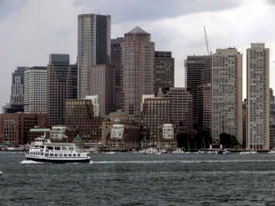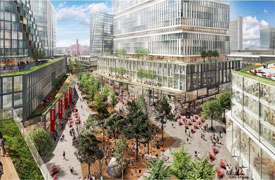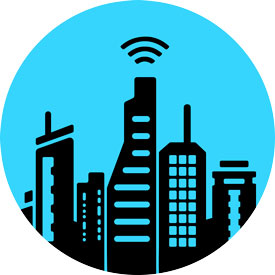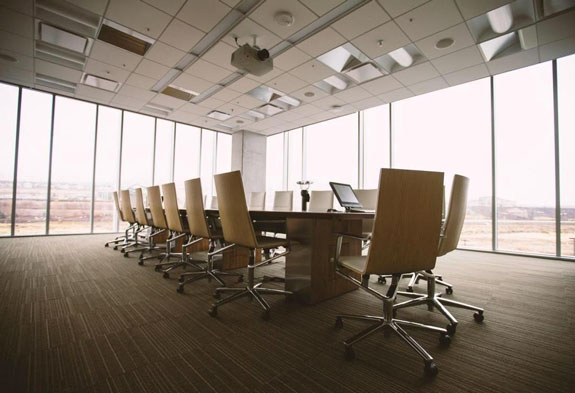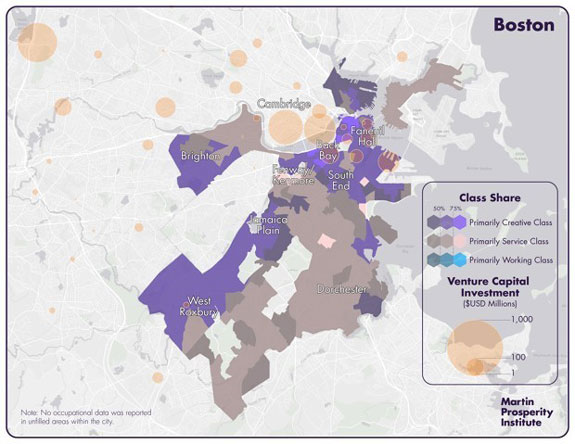Class A landlords are continuing to update and upgrade their assets to address the evolving needs of today’s tenant. The 402-foot, 41-story Class A tower at One Post Office Square was built in 1981 and is 832,000 rentable square feet with a typical floor plate of 18,221 square feet.
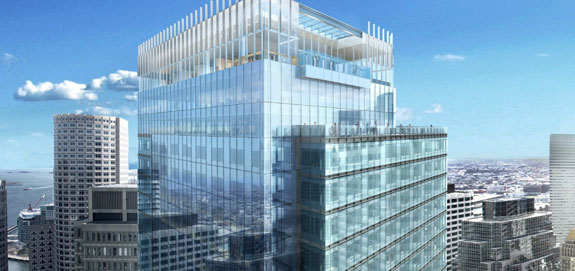
Credit: Banker and Tradesman
A recent Banker and Tradesman article speaks to the proposed transformation, noting the office “tower in Boston’s Financial District will get a new glass facade, a roof deck and terraces and an illuminated rooftop glass “lantern”…On the lower levels, a three-story glass pavilion will add 52,100 square feet of retail space and an 8,800-square-foot restaurant…An 18-story addition replacing the existing garage on Oliver Street would [also] contain automated parking and additional office space.”
Click on the link for additional information on the One Post Office Square renovation on B&T’s website.

